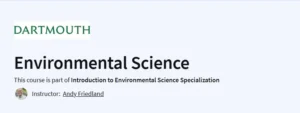What you will learn in How Things Work: An Introduction to Physics Course
Newton’s Laws of Motion: Understand the fundamental principles governing the movement of objects.
Inertia and Momentum: Explore the concepts of inertia and momentum through everyday examples.
Projectile Motion: Learn how objects move under the influence of gravity and other forces.
Energy and Work: Understand the relationship between energy, work, and power.
Mechanical Systems: Study the mechanics behind simple machines and complex systems.
Fluid Dynamics: Gain insights into the behavior of fluids in motion.
Thermodynamics: Learn about heat, temperature, and the laws governing thermal energy.
Program Overview
Newton’s Laws of Motion
⏳ 14 hours
Overview of the three laws of motion, with practical applications in real-world scenarios.
Inertia and Momentum
⏳ 14 hours
Detailed exploration of how objects behave when forces act on them and how momentum is conserved.
Projectile Motion
⏳ 14 hours
Study of objects moving through the air, including calculating speed, distance, and time.
Energy and Work
⏳ 14 hours
Understanding the concepts of work, power, and energy, and how they relate to mechanical systems.
Mechanical Systems
⏳ 14 hours
Explore how simple and complex mechanical systems function using basic principles of physics.
Fluid Dynamics
⏳ 14 hours
Study the flow of fluids in pipes, through obstacles, and around objects.
Thermodynamics
⏳ 14 hours
Learn about energy transfer, heat engines, and the laws of thermodynamics, focusing on their real-world applications.
Get certificate
Job Outlook
Proficiency in Physics is valuable for roles such as:
Mechanical Engineer
Aerospace Engineer
Product Designer
Research Scientist
Skills acquired in this course are applicable across industries, including engineering, manufacturing, automotive, and energy sectors.
Completing this course can enhance your qualifications for positions requiring a deep understanding of physics principles and their practical applications.
Specification: How Things Work: An Introduction to Physics
|
FAQs
- No advanced math or physics background is required.
- Concepts are taught using real-world examples like motion, energy, and forces.
- Mathematical content is kept at a very basic, intuitive level.
- Ideal for students, professionals, and lifelong learners curious about science.
- Explains the science behind motion, energy, and mechanics.
- Connects principles to cars, sports, household appliances, and gadgets.
- Uses relatable examples instead of only laboratory settings.
- Makes abstract physics concepts tangible and easy to grasp.
- Focuses on conceptual understanding rather than memorization.
- Uses real-life case studies and analogies for clarity.
- Limited use of formulas—emphasis is on why things happen.
- Builds curiosity and logical reasoning over rote problem-solving.
- Develops analytical and critical thinking skills.
- Serves as a foundation for advanced studies in science and engineering.
- Useful for careers in teaching, research, and STEM-related industries.
- Enhances general problem-solving abilities valuable in any profession.
- Explains how major discoveries shaped modern physics.
- Introduces contributions of famous scientists in relatable terms.
- Shows the evolution of everyday technologies through physics principles.
- Connects scientific progress to cultural and technological changes.





